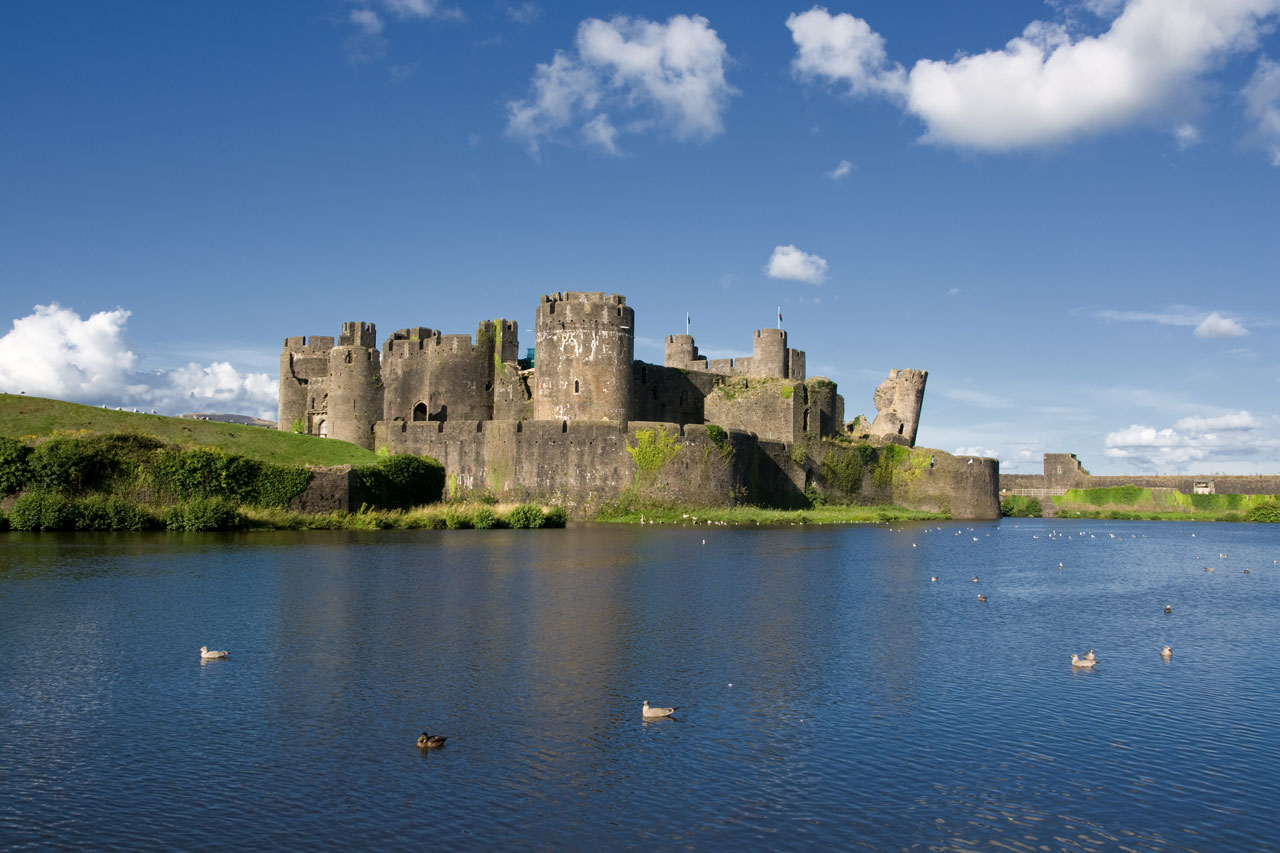- Home
- Welsh Castles
- Caerphilly Castle
Visit Caerphilly Castle

A brief history
Caerphilly was the first concentric castle built in Britain and, covering some 30 acres, is also the largest castle in Wales.
The site was chosen by Gilbert de Clare, the Earl of Gloucester, as the perfect spot from which to exercise control over the unruly Welsh and Llewelyn, their last great rebel prince. Construction began in 1268. Massive walls, towers and gatehouses were erected and a huge buttressed dam was built to hold back the waters of the artificially created lake. The castle was finally completed in 1272 even though Llewelyn tried to attack the workforce, but did not succeed.
The castle's active history was very short. By 1283 Edward I had removed the threat of Welsh Independence and minor Welsh attacks failed to make an impact. The first serious assault was made in 1321 when the castle was held by Hugh Le Despenser, a favourite of the ill-fated Edward II. In 1326 Isabella of France, wife of King Edward II, overthrew government and was intent on destroying the power of her husband's favourite. Isabella's forces besieged the Castle but they were too late to capture Edward who had already fled. Both Despenser and Edward II were eventually killed.
In the 15th century Owain Glyndwr briefly captured and held Caerphilly during the revolt against Henry IV. After that the castle fell into disuse like so many of the other great Welsh castles. By the time of the Civil War it was well on the road to ruin. It suffered the usual undignified slighting at the end of the fighting and its famous south eastern tower, leaning at least nine feet out of the perpendicular, is believed to be the result of Cromwell's explosives.
Caerphilly Castle passed by marriage to Richard Beauchamp, Earl of Worcester, and eventually to the Herbert family of Pembroke. Nobody took up residence in the castle as it was too uncomfortable to live in until the Victorian Bute family stepped in and started to restore the castle.
It was in 1928 that the wealthy fourth Marquess of Bute undertook the biggest restoration work of Caerphilly Castle. All parts of the castle that had collapsed since the Middle Ages underwent restoration work. It was the biggest and most authentic project of its type ever undertaken in Britain. Gatehouses, bridges and towers were meticulously restored with the help of 15 full-time masons and numerous workers and contractors.
In 1947, when the fifth Marquess of Bute inherited the castle, the Bute family had sold most of its holdings in Wales. In 1950 he donated Caerphilly Castle to the state. By then the huge dams had been repaired and the lake refilled. The castle is managed by Cadw, the Historic Environment Department of the Welsh Assembly Government and the Conservation Work is ongoing.
Attractions and Activities
Caerphilly is an early example of the impregnable concentric castle design, effectively a castle within the walls of another castle. This large fortification spreads over more than 30 acres and at many points the sandstone walls of the castle are more than a foot thick.
Look out for the South Eastern Tower. Dubbed "The Welsh Tower of Pisa", it leans at 10 degrees to the vertical and looks most impressive. The cause may have been subsidence or Cromwell's attack on the castle, nobody knows for sure.
As you climb one of the towers of the main gatehouse the castle comes in full view with four more gatehouses, three fearsome towers. two rings of curtain wall, two huge moats and a big Great Hall. And the views of the Welsh hills are beautiful.
Location
Caerphilly Castle
Castle St, Caerphilly CF83 1JD
Official Website: Caerphilly Castle

